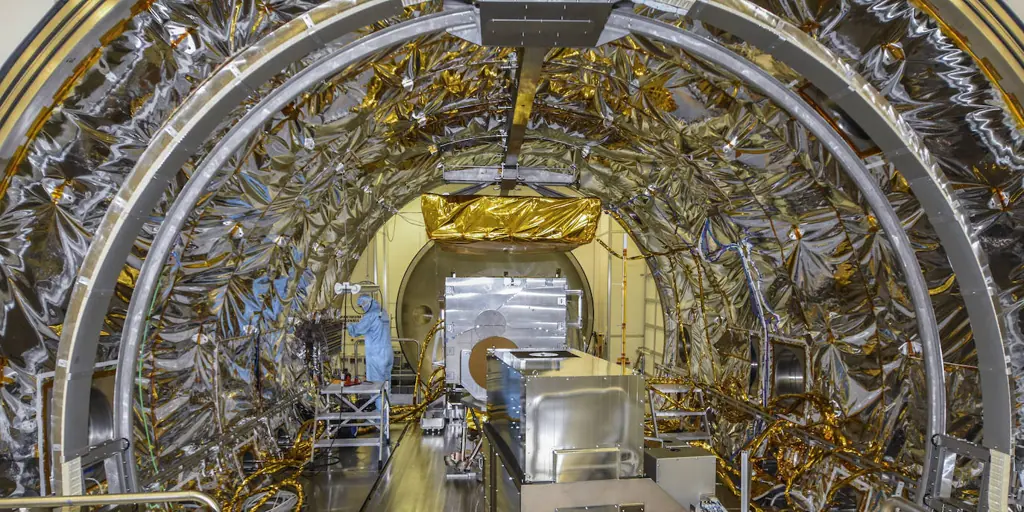Until recently, accessing this place, a gigantic room of the Thales Alenia Space company in Cannes (France), was practically impossible. The defense satellites of the French army were integrated here. Top secret. Now, the workers, dressed in gowns and with their heads and feet covered to ensure maximum neatness, can be seen through the glass. What they have at hand also requires delicate and precision work. This is the payload, the instrumental part, of a CO2M (Copernicus Anthropogenic Carbon Dioxide Monitoring) satellite, the first space indicator to combat an enemy that transcends borders: carbon dioxide (CO2) emissions caused by human activity that influence climate change. In principle, the mission will be made up of two satellites that will be part of the Copernicus environmental monitoring program of the European Space Agency (ESA). They are scheduled to be launched from the end of 2026. A third device may be added later. At the Paris Summit (COP 21) in 2015, nearly 200 countries agreed on the need to keep global warming as far as possible from the 2°C above pre-industrial levels. The gas that contributes the most to warming is CO2, emitted into the atmosphere mainly from natural sources (the respiration of living beings, volcanic eruptions or organic decomposition), but also from the combustion of coal, oil and gas in our industries. and automobiles. The ESA mission will be the first capable of distinguishing between these two sources of CO2. Related News Sentinel-2C standard No The new space ‘eyes’ take off to monitor natural disasters and wars Patricia Biosca The satellite will take off on the last flight of the Vega rocket on July 4 from the launch facilities of the European Space Agency in Guyana French. Its objective: to take images with up to 10 meters of resolution of the Earth’s surface. “The emissions produced by human activity form a kind of plume with a very high density of gas. But the plume could be produced by an oil manufacturer or be a natural fire. Therefore, to be sure of its origin, the satellites will measure, along with CO2, other gases characteristic of human activities, such as nitrogen dioxide (NO2)”, explains Yvan Baillion, director of European Earth observation programs at Thales. Alenia Space. The two CO2M satellites will cover the entire planet every five days OHBNo excusesCurrently each country calculates its total emissions from those associated with its economic sectors and its consumption of fossil fuels, statistics that are more or less reliable but are sometimes difficult to verify. With CO2M, it will be easier to see the extent to which states are complying or not complying with international agreements, since their free and accurate data will be available to everyone. Furthermore, no country will be able to excuse itself by claiming that it lacks the tools to measure its emissions. This changes the rules of the game. The mission will fly at about 735 km altitude – almost double that of the International Space Station (ISS) – in a sun-synchronous orbit (synchronous with the Sun), which means that it will always take measurements at the same time of day. The duo “will provide global coverage every five days. If an additional satellite is added, the constellation would cover the planet every three and a half days,” explains Ian Bennett, director of Earth Observation Systems at OHB System, main contractor for the satellite. The device is the result of a consortium of more than thirty companies from fifteen European countries. In Spain, Thales Alenia has manufactured part of the instrument, such as the transponders that establish communication with the control station. In the Cannes clean room, named for the controlled conditions to minimize the presence of contaminating particles, the satellite payload , a mass of 580 kilos (the entire satellite weighs about 2,000 kilos), is subjected to mechanical and electromagnetic compatibility tests. Among the instruments, a titanium and ceramic spectrometer that is cooled to 23º C below zero to ensure the stability and alignment of its 16 optical components. In ten months it will be fully integrated. CO2M will be sensitive to a 0.1% fluctuation in atmospheric CO2 and will offer a global image of the entire Earth with a precision that will even allow the emissions of a city such as Paris or Madrid to be identified. The pair will remain in orbit for ten years and, predictably, will be replaced later by a new generation, in the same way that the Sentinel Earth observation satellites are replaced.Integration of the Sentinel-1C satellite Thales Alenia space Sentinel-1C The next sentinel You will see through the clouds “To Kourou (A Kourou)”. A simple sign placed on the frame where Sentinel-1C rests, ESA’s new Earth observation satellite, confirms that the spacecraft, which is also integrated into the ThalesAlenia Space facilities in Cannes, is now ready for use. its launch aboard an Ariane rocket from the spaceport in French Guiana. Then, this 2.2-tonne mass will extend its 12-meter solar panels, now retracted, so that its enormous radar can monitor sea ice, oceans, deforestation of forests, floods or millimeter movements through the clouds. of the ground caused by earthquakes. A red protective panel on both sides of the satellite reads “Remove before flying.” Simonetta Cheli, director of ESA’s Earth Observation Programmes, believes that CO2M will change the way countries will confront climate change. “Environmental satellites give us data that is objective, they have no opinion, that is why they are so important to help politicians make decisions,” he explains. CO2M is “conceived as a space technological solution to the implementation of COP 21, an instrument with a very precise resolution that until now we did not have,” he continues. MORE INFORMATION news No The photograph of a strange striped rock excites scientists news No A seed from a thousand years ago ‘resurrected’ an extinct tree«During the pandemic, thanks to the European Copernicus program, we saw how greenhouse gases dropped to half in cities like Madrid, Milan or Rome, which gives us an idea of the importance of space to measure the climate,” says Cheli.
The first space whistleblower against climate change will say who and how much pollutes

